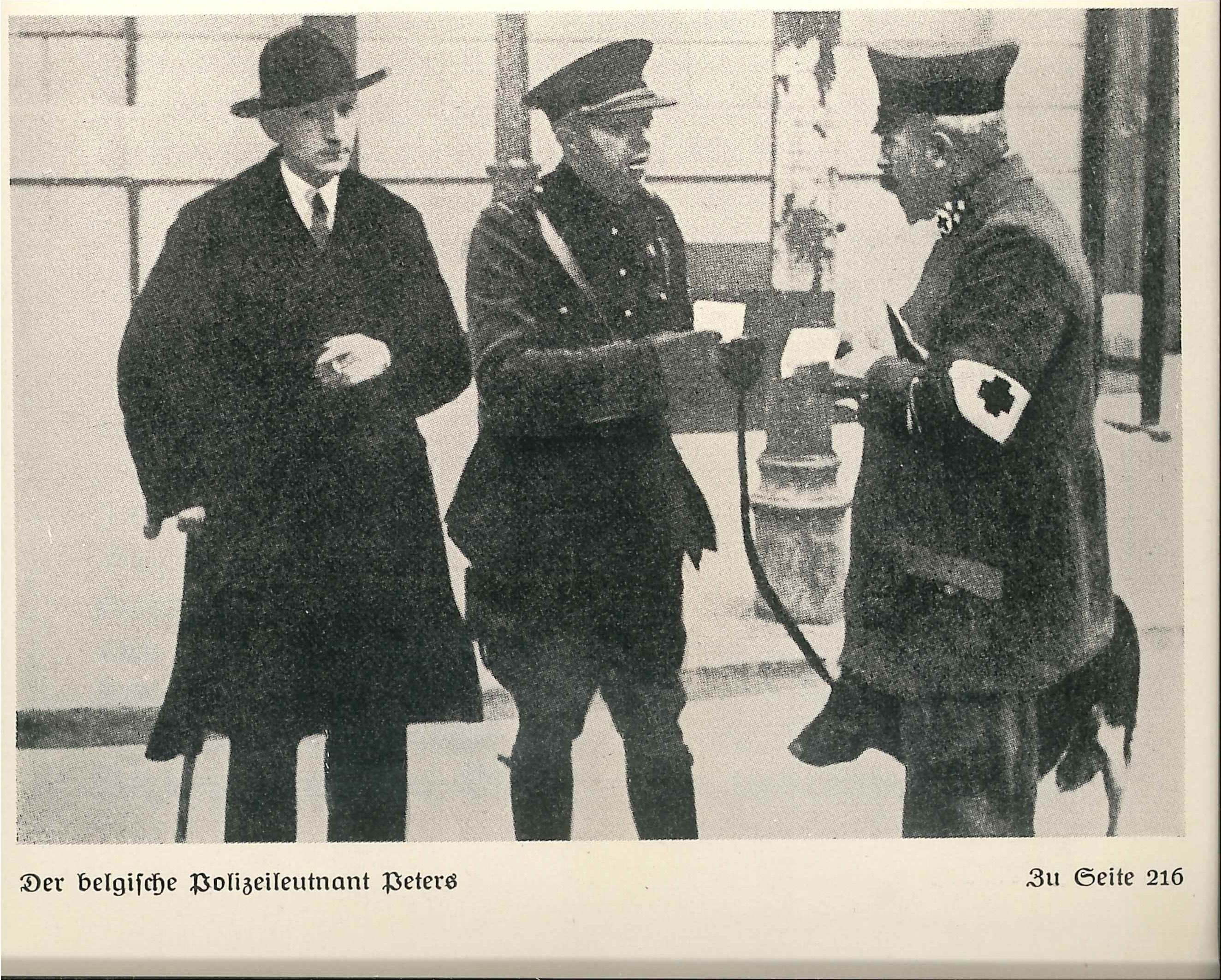| Previous page | Back to exhibition's homepage | Next page |
|
|
|
|
| Waar de Militaire Veiligheid, actief in de periode 1914-1918, wordt afgeschaft einde september 1919, wordt einde 1918 een nieuwe dienst militaire veiligheid geïnstalleerd ten behoeve van het Belgische Bezettingsleger in Duitsland: de ‘Sûreté Militaire de l’Armée d’Occupation’ (SMAO). | Although the Sûreté militaire of the 1914-1918 period was officially dissolved at the end of September 1919, a new military agency was established in late 1918 near the Belgian forces of occupation in Germany (in Rhineland and the Ruhr): the SMAO. | Si la Sûreté militaire active en 1914-1918 est officiellement supprimée fin septembre 1919, un nouveau service de sûreté militaire est installé fin 1918 près de l’armée d’occupation belge en Allemagne (en Rhénanie et Ruhr) : la SMAO (Sûreté Militaire de l’Armée d’Occupation). |
| Ditmaal zijn de rollen omgedraaid: het Belgische leger bevindt zich in de rol van de bezetter en moet het hoofd bieden aan het verzet van de Duitsers, die deze bezetting als onwettig beschouwen. In dit gespannen klimaat is de opdracht van de SMAO, verantwoordelijk voor de veiligheid van het leger, vitaal. | That time, the situation had reversed: the Belgian army was the occupier and had to face the resistance of hostile Germans who deemed the occupation illegitimate. In this tense context, the SMAO’s mission, which consisted in ensuring the security of the army, was of the utmost importance. | Cette fois, la situation est inversée : l’armée belge se retrouve dans la position de l’occupant et doit faire face à la résistance des Allemands hostiles à une occupation perçue comme illégitime. Dans ce climat tendu, la mission de la SMAO, chargée de la sécurité de l’armée, est très importante. |
| De taken zijn meervoudig en heterogeen. De dienst moet zich wijden aan de contraspionage, inwinnen van politieke inlichtingen zoals de controle van de publieke opinie, en het toezicht op communistische en nationalistische bewegingen. Anderzijds moet de SMAO optreden als een dienst ter handhaving van de openbare orde en als gerechtelijke politie. | The SMAO was entrusted with a wide range of tasks. It had to conduct counter-intelligence and political intelligence missions (assessing the state of mind of the population, monitoring communist and nationalist movements, etc.), and act as a peacekeeping force and judiciary police. | Ses tâches sont multiples et hétérogènes. Elle doit se livrer à la fois au contre-espionnage et au renseignement politique (contrôle de l’état d’esprit des populations, surveillance des mouvements communistes, nationalistes, etc.) et officier comme force de maintien de l’ordre et de police judiciaire. |
| De ervaringen van de Eerste Wereldoorlog maken dat de meeste van de agenten van de SMAO Duitsland-haters zijn. Er zijn voortdurend wrijvingen met de lokale bevolking. En omdat ze slecht Duits spreken, zijn ze overgeleverd aan informanten.
|
Still affected by the First World War, most SMAO agents shared an anti-German sentiment. The context regularly generated frictions between them and the local population. Since they spoke German poorly, they had to count on informants.
|
Marqués par l’expérience de la Première Guerre, les agents de la SMAO sont pour la plupart germanophobes. Ils connaissent des frictions répétées avec la population locale. Parlant mal l’allemand, ils doivent se fier à des indicateurs.
|
|
De geschiedenis van de SMAO is doorspekt met aanslagen en schandalen. Zo wordt de dienst bekritiseerd omwille van zijn rol in de nasleep van de aanslag tegen de spoorwegbrug te Hochfeld (30 juni 1923), waarbij 11 Belgische militairen omkomen. Daarenboven wordt hij in vraag gesteld wanneer bepaalde van zijn agenten de Rijnlandse separatisten steunen, wat leidt tot de putsch van Aken tijdens de nacht van 20 op 21 oktober 1923. |
The history of the SMAO was punctuated by scandals and attacks. Some agents supported the Rhineland separatism that led to the coup of October 1923. The agency was also criticised for its inefficiency after the Hochfeld attack (30th June 1923), in which 11 Belgian soldiers died. |
L’histoire de la SMAO est émaillée de scandales et d’attentats. Certains agents soutiennent le séparatisme rhénan qui mènera au putsch d’octobre 1923. Elle est aussi critiquée pour son inefficacité à la suite de l’attentat ferroviaire de Hochfeld (30 juin 1923) qui coûtera la vie à 11 militaires belges. |
| Previous page | Back to exhibition's homepage | Next page |




